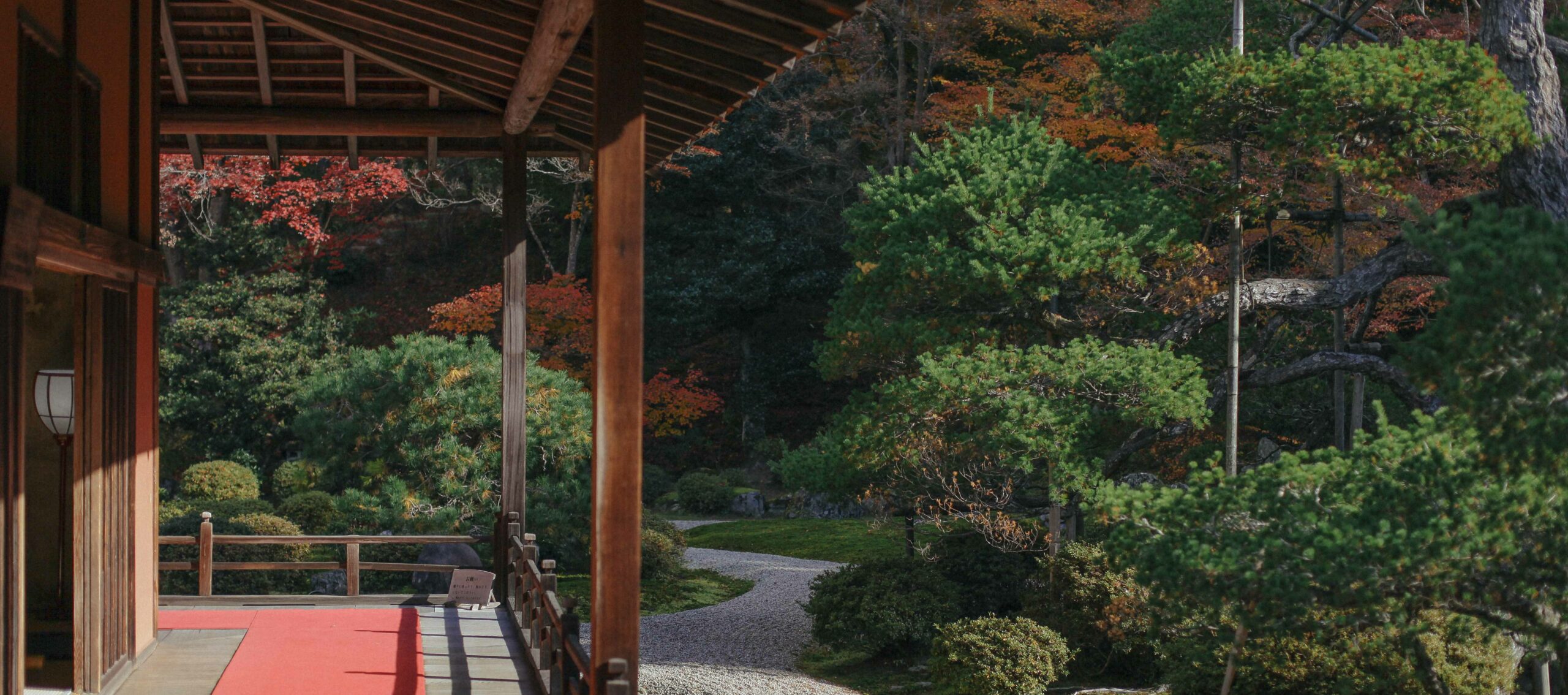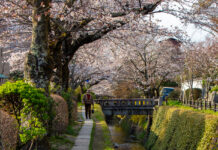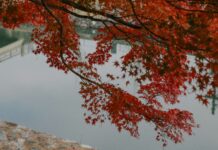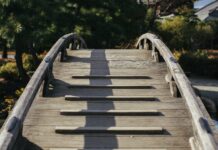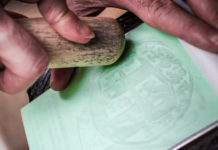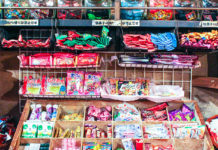Set snugly into the rising hills of northeast Kyoto, Manshuin Monzeki is a tale of two temples; one ancient and with a deep patina of time, the other its gleaming modern twin, a rare insight into the sights and smells of a newly constructed temple.
Manshuin Monzeki is less than fifteen minutes’ walk from the better-known Shūgakuin Imperial Villa, but is almost entirely overlooked by tourists. Perplexing, as the temple itself is a complex and multi-layered marvel set in maple groves so rich in colour as to defy belief. However, the temple’s hidden nature is the foundation of its appeal. Access to the temple, while not quite an epic adventure, is a rare chance to experience Kyoto city’s outer limits blend from traditional wooden homes into the surrounding mountain forests.
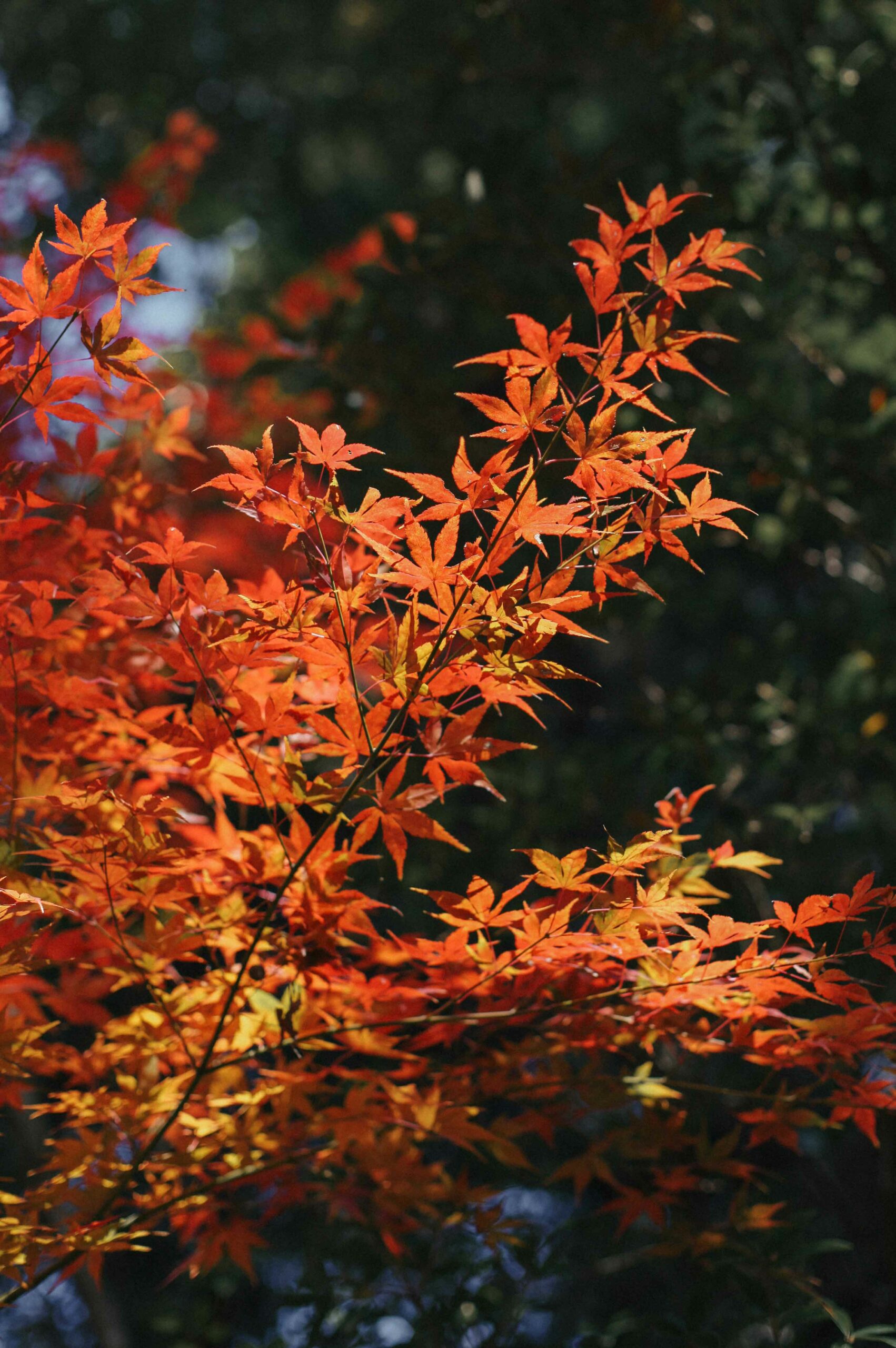

From Demachiyanagi, a short ride on Kyoto’s dinky Eizan line brings you to Shūgakuin station, which offers the best walking access to the villa itself, as well as Manshuin Monzeki. Mapping apps will save the day here, as the walk to the temple involves following uphill streets through old residential neighbourhoods. Manshuin is signposted on hand-painted wooden boards, but these are easy to miss for non-Japanese speakers. Look out for ‘曼殊院’ as you make your way upwards. Having passed wooden homes teetering on the edges of steep, forested valleys to your left, you’ll arrive at a long avenue heading upwards. If you’re visiting in autumn and at the peak of the season, you’ll see umber and vermilion sprays of maple in the tree-tunnel that leads upwards.
Turning left will lead you to another maple grove and several older buildings; Shintо̄ shrines and a wide, shallow pond filled with gliding, glimmering carp. The outer walls of the temple lie over a small wooden bridge, framed with trees of intense hues of saffron, yellow, and lacquer red. On a clear and sunny day, the colours seem almost impossible to comprehend, with the sky seeming all the bluer through gaps in the vibrant foliage.
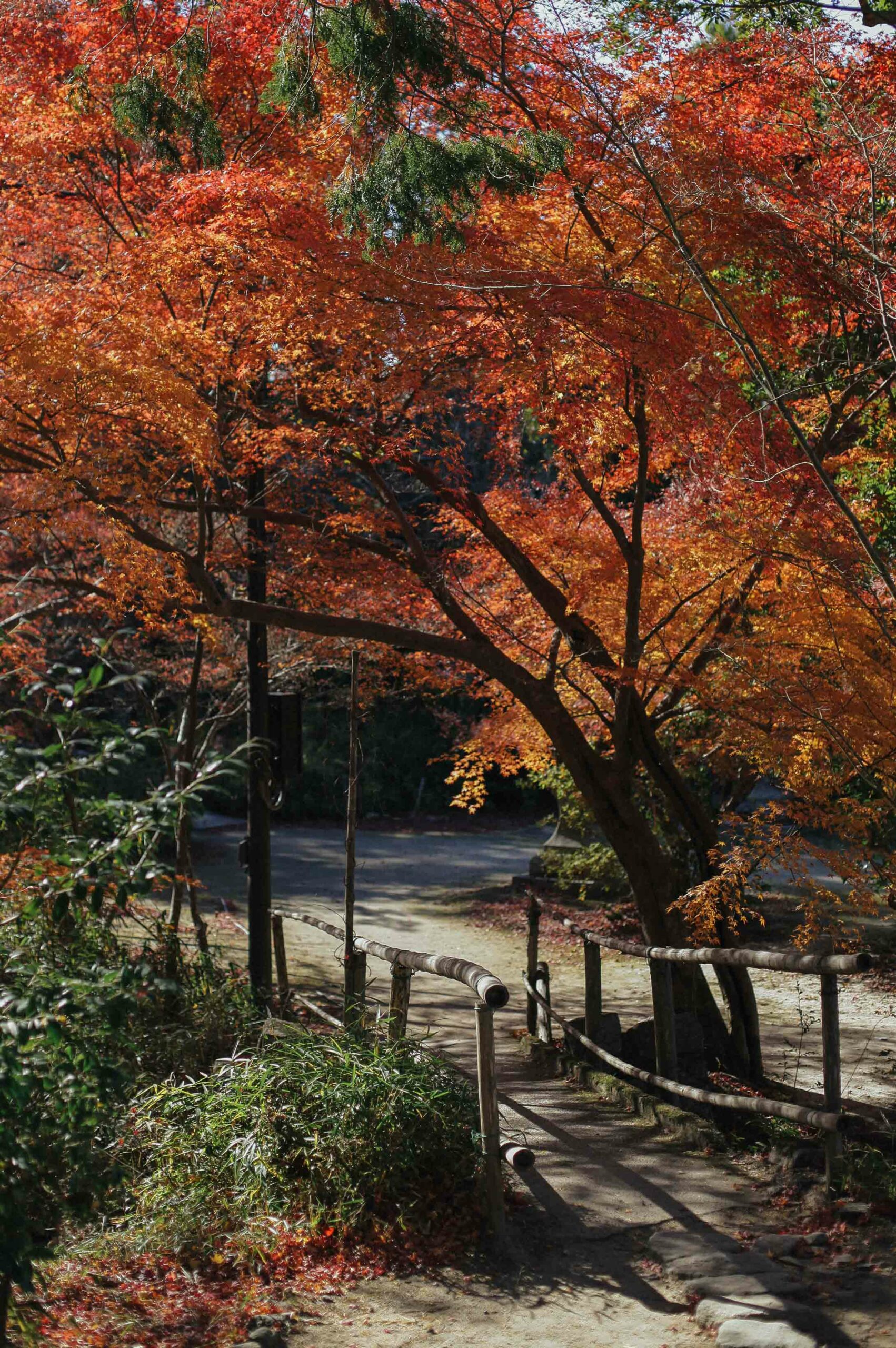
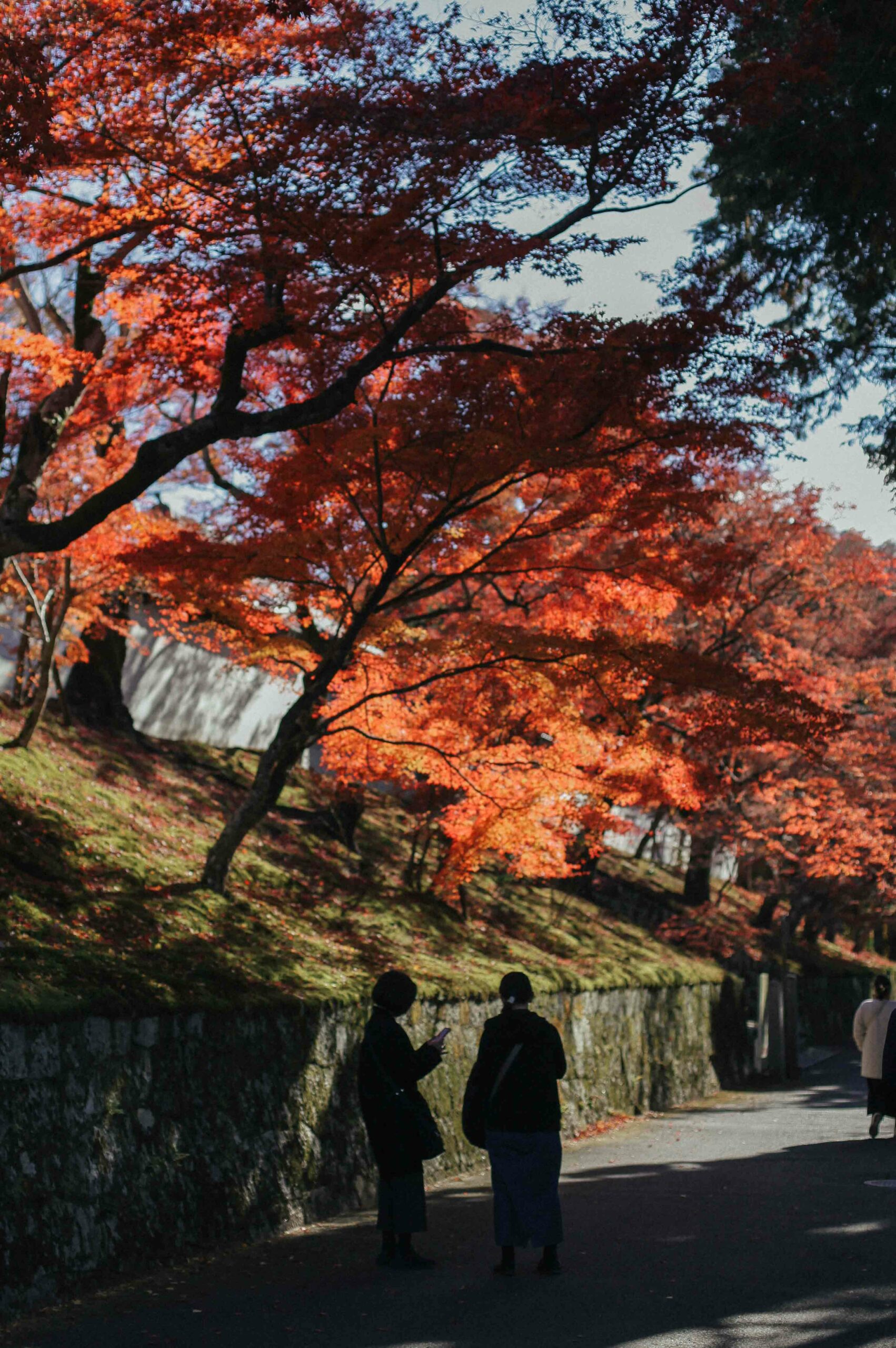
Up a small slope, you’ll arrive at the entrance to Manshuin’s temple buildings. Photographs aren’t permitted in the oldest section of the building, which houses the temple’s valuable collection of fusuma-e (painted sliding doors). However, the outer zones of the newer building and the temple’s wraparound gardens are open for photographing.
After handing over a very fair ¥600 entry fee, you’ll enter the building’s reception space. Dark, quiet, and with a profound sense of the ancient, the double-height room is structured around enormous cedar beams and pillars, blackened with age. Remove your shoes and store them in the shelving area before stepping up from the genkan (entry zone) to the high wooden platform leading through the building. To the left of the entrance is a set of stoves, now covered with wooden lids. Previously, these open-flame stoves would have been used daily for cooking the meals of the temple’s monastic inhabitants. The flames are long extinguished, but the smoke has coloured the inner walls of the room with a deep patina of soot.
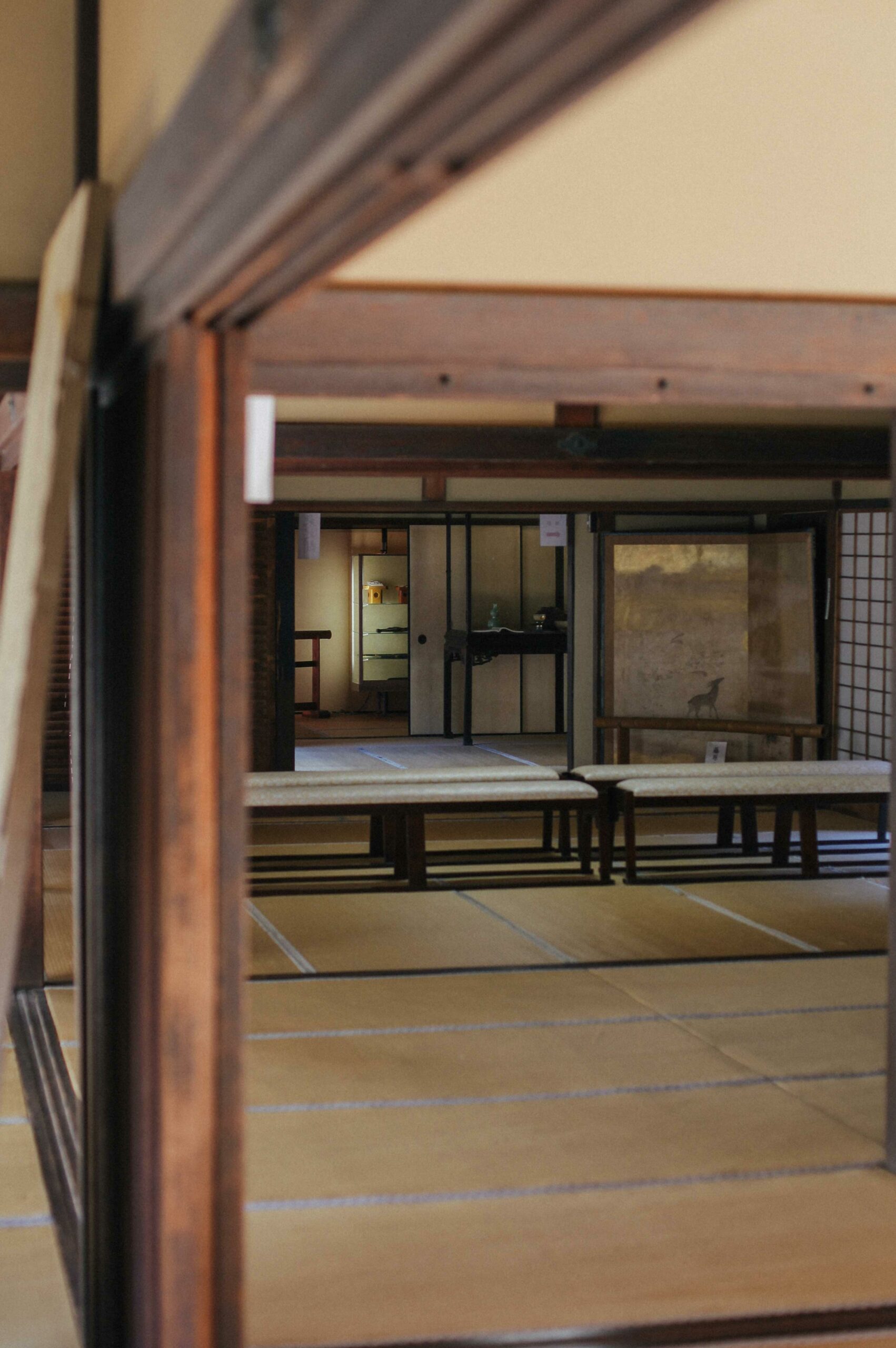
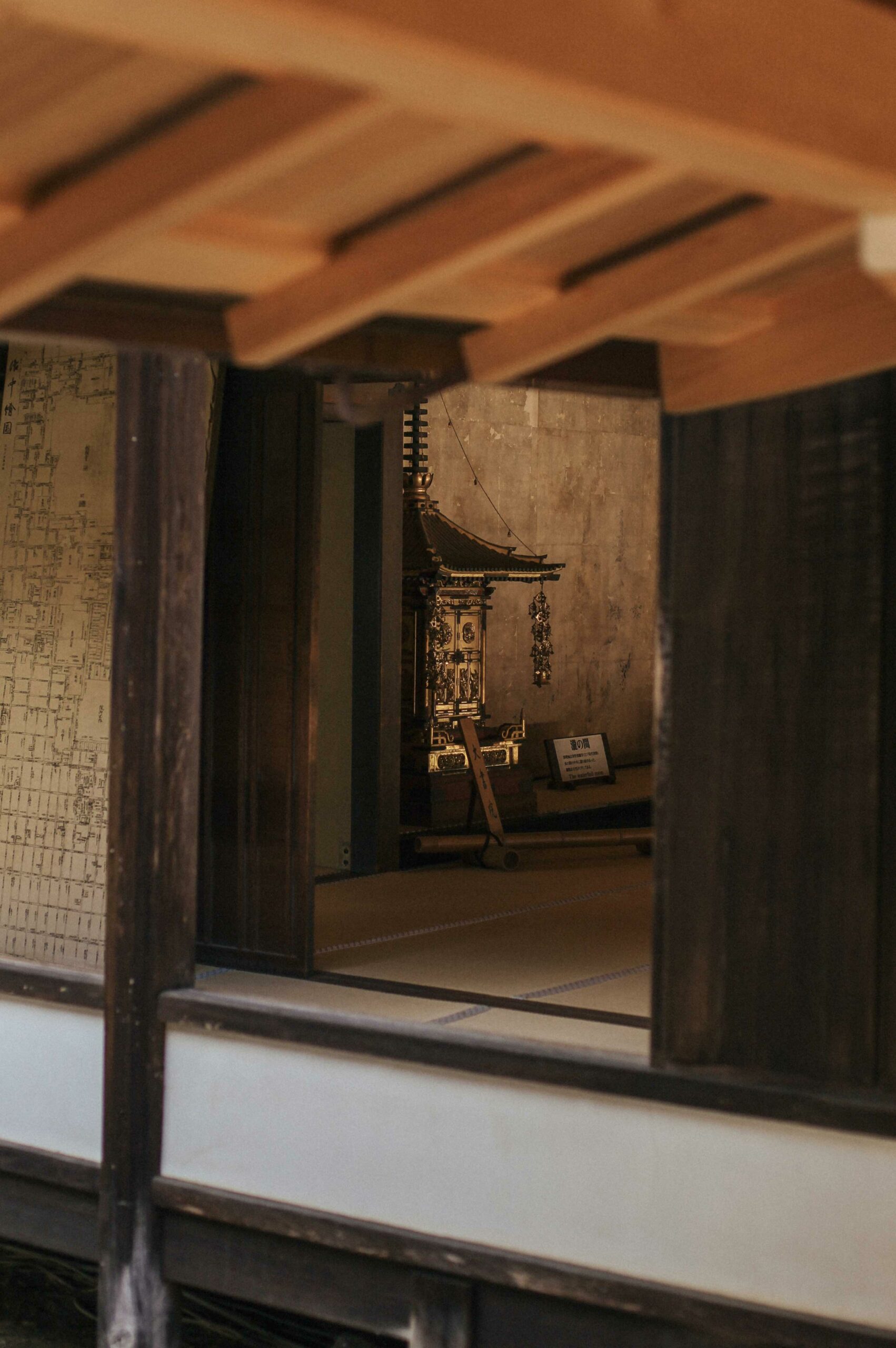
Although the temple interior seems modest at first – perhaps even ‘well-worn’ in places – it houses a unique collection of artwork and artefacts of cultural significance. Two of the temple’s rooms (the large ‘Daishoin’ and small ‘Koshoin’) are specially designated Important Cultural Properties, and the upper portions of the hallways are lined with framed photographs of famous visitors. Most notable are the Emperor Akihito, Queen Elizabeth II, and… David Beckham (whom some would argue counts as footballing royalty).
It may seem odd that so many individuals of high status have visited Manshuin Monzeki, which most visitors to Kyoto have never heard of and likely won’t visit. However, this understated site holds the highest significance within the Tendai sect of Japanese Buddhism. The temple’s first incarnation was built on Mount Hiei in the 8th century by the monk Saichо̄, the founder of Tendai Buddhism. The site was moved to its present location and rebuilt in the 1650s, and some of the original architecture still remains.
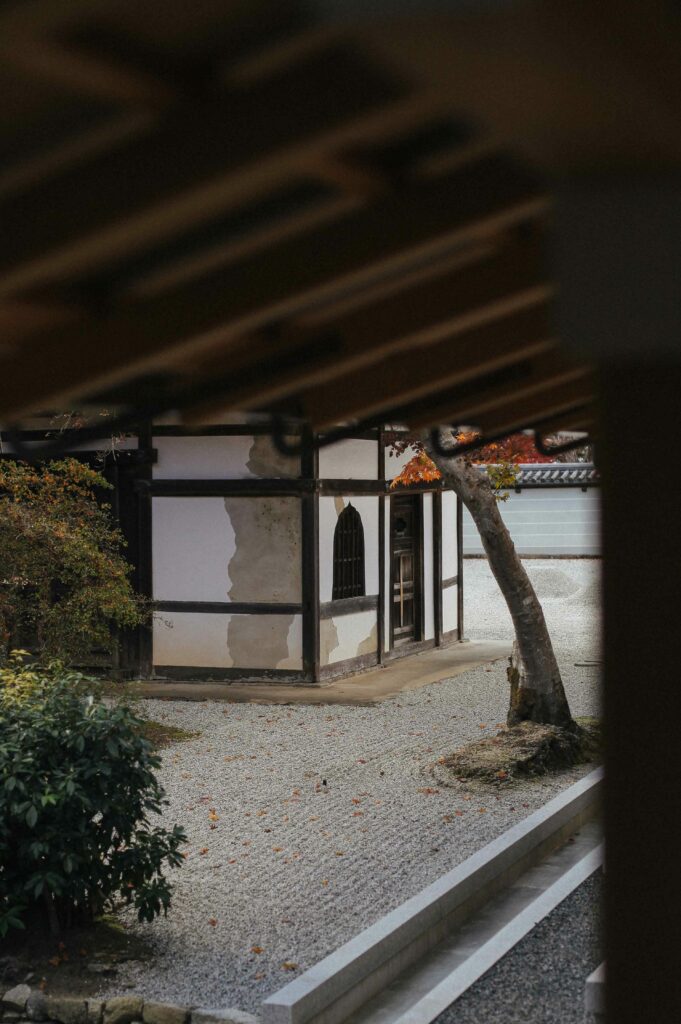
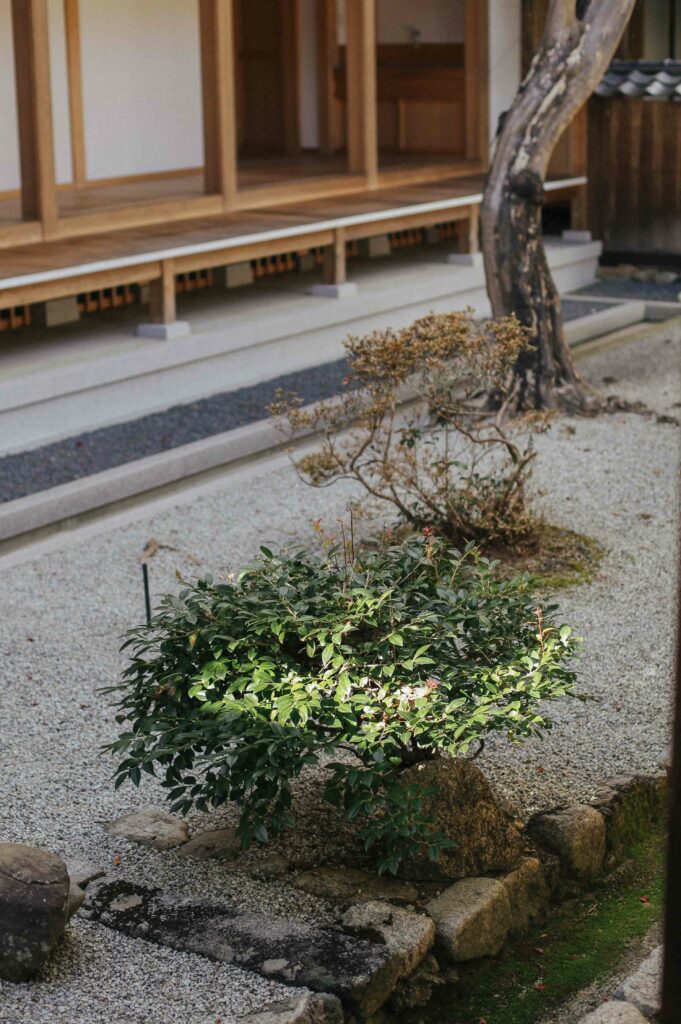
Most notable in the temple’s ‘old quarter’ are the screen paintings of the Tan’yu school, painted by founding father Kano Tan’yu himself. Other famous Tan’yu school paintings include the breathtaking walls within Nijо̄ Castle, depicting lofty black pines graced with black kites and, separately, tigers and jaguars winding their long bodies through bamboo groves.
Further along, unique paintings are displayed in the Peacock Room and the Mount Fuji Room, among others. Photographs of these interiors are almost non-existent, and so they must be seen in person. The rooms have a veil of faded splendour; you can easily picture the ornate colours and golden tones in their vibrant heyday. Now, however, the works have attained a kind of beauty only possible through the accumulation of age. The remaining walls of these rooms are undecorated; some have paper that is slowly peeling away. One disappearing patch has revealed relics of the past: crumbling bald spots on the wall’s plaster have been patched and layered with used sutra papers; hand-written sheets of calligraphy by lay Buddhists as an act of dedication. While these features may not be bright or gilded, they are innately human touches; small signs of the ordinary sat quietly behind the splendour.
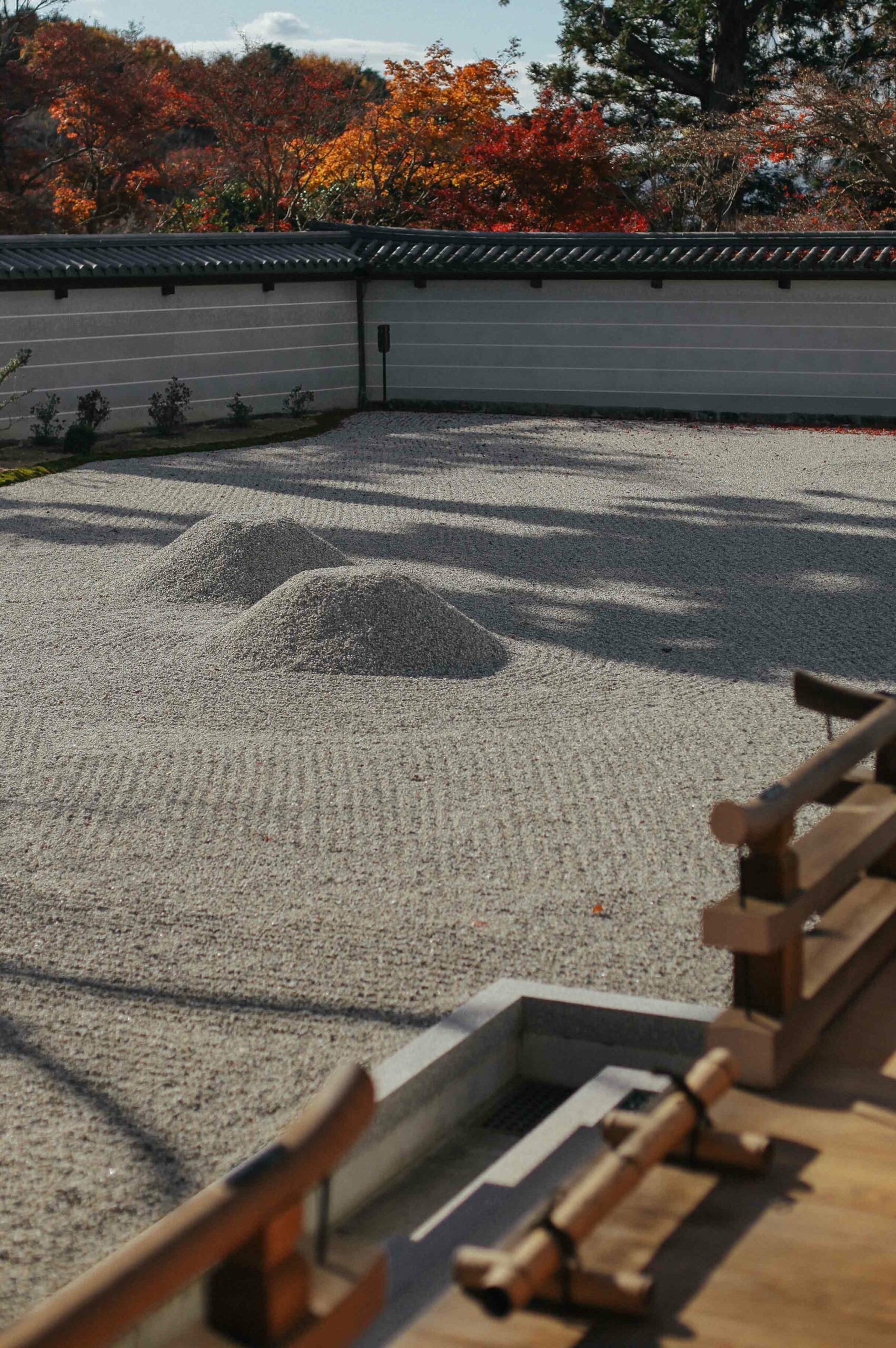
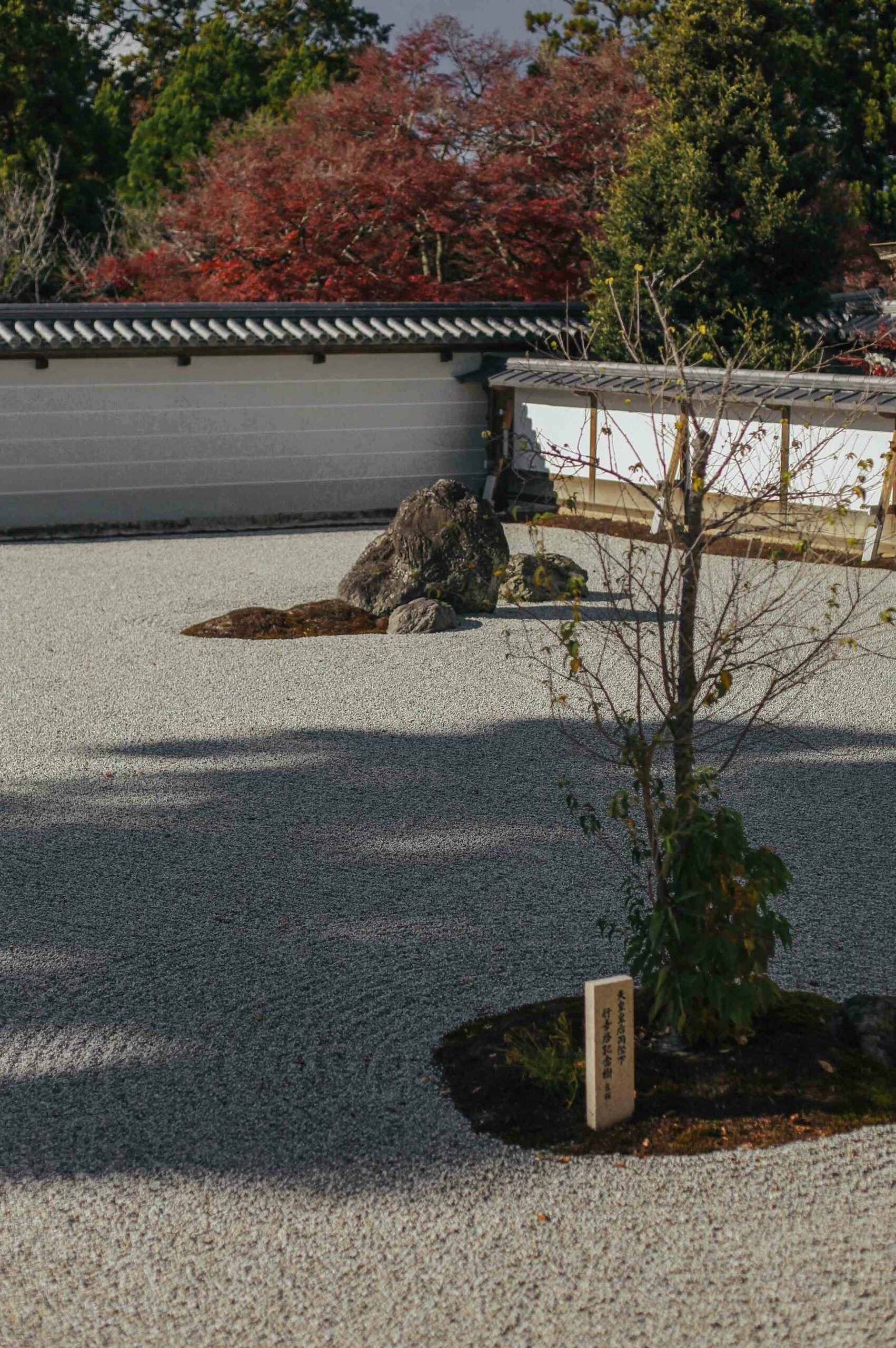
It’s worth taking your time to absorb the atmosphere of the inner rooms and their cultural artefacts, which aren’t often easily viewed in larger temples. From here, you can exit the central rooms and move out towards the spectacular gardens, which frame the perimeters of both the old and new temple buildings.
Arriving at the fresh, pine-scented new-build is almost a moment of surprise; it seems bizarrely out of place, sitting next to such an aged building. At this point, you realise that all of Kyoto’s venerable old structures will at one point have been shiny and new. They weren’t built from blackened cedar, but started out the colour of fresh pine, smooth to the touch and warmly fragrant. The idea of a shiny new temple feels like an oxymoron, yet it would have been a normal sight for much of Kyoto’s history. Almost all of the city’s temples have been burned down and rebuilt regularly over the course of a millennium.
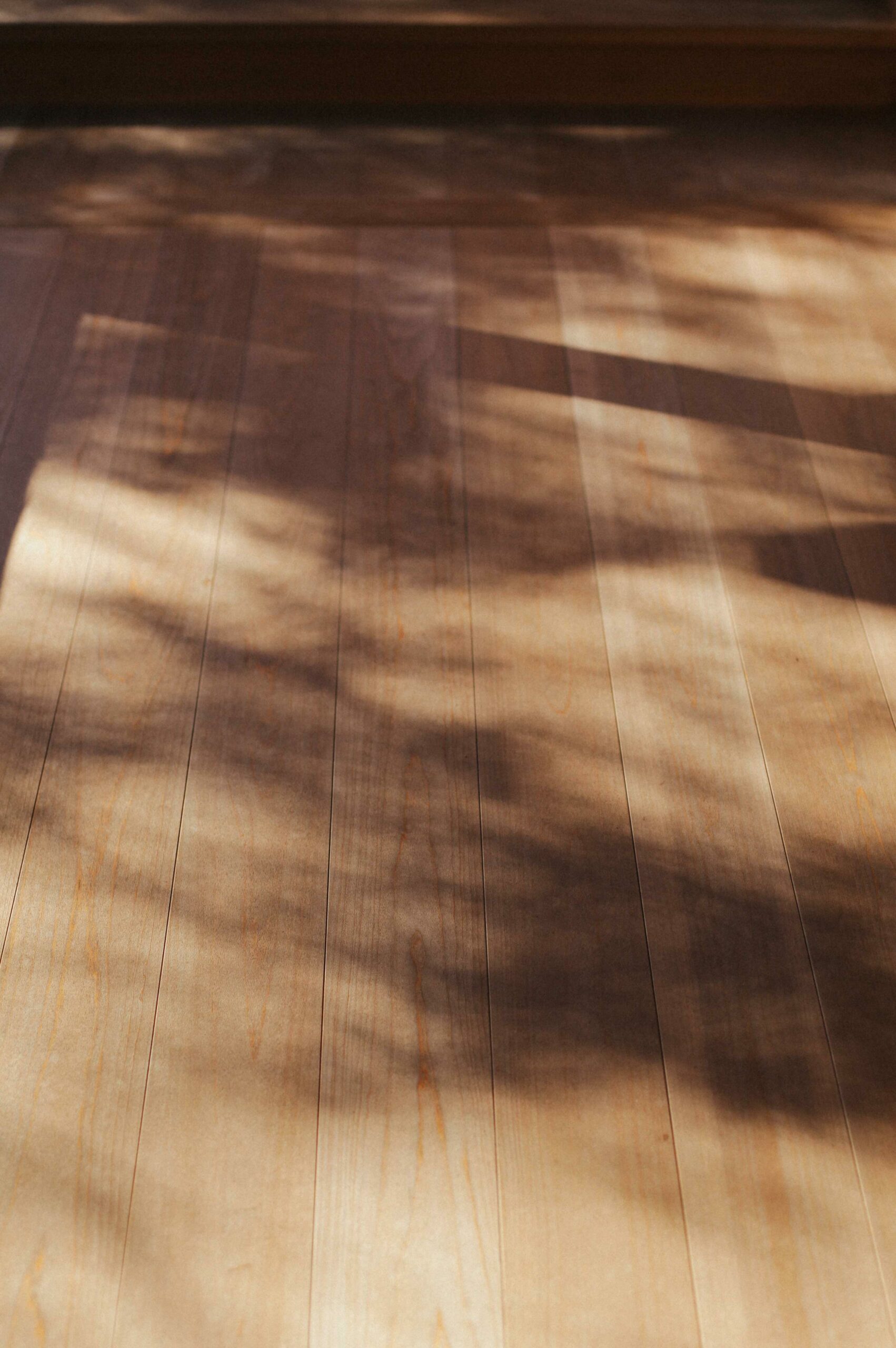
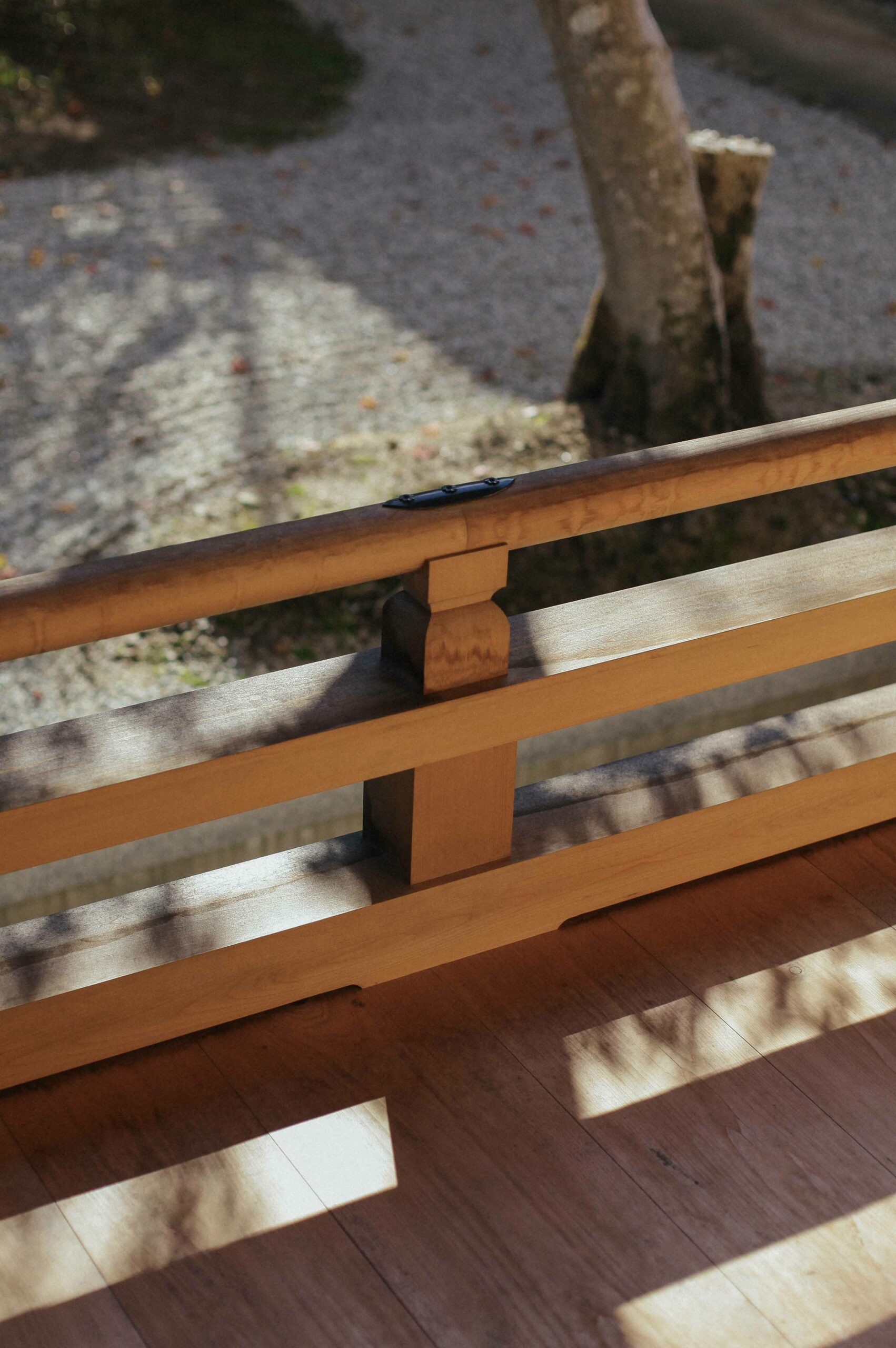
As you slip-slide in your socks across the perilously smooth floor of the new temple, take the time to look out upon the richly planted rear garden. Most kare-sansui (dry stone) gardens are planted sparingly or not at all, but Manshuin’s comprise entire ‘islands’ of pine, maple, ferns, and moss. As these islands thin towards the outer edge of the property, the temple’s veranda turns you toward the main dry stone garden. It is unusual in its largeness and sparsity of features, with a high wall that blocks out the view of the valley below. This lack of a landscape in context creates the feeling of looking out from a man-made eyrie, with nothing below but empty space. Despite creating the sense of a lonely mountain plateau, the expanse of this stone garden has been designed to evoke the ocean.
Interpretations of sea and sky aside, Manshuin’s kare-sansui is unique among gardens of its kind, and can be viewed at leisure from the veranda of the new temple building.
The veranda leads back into the original buildings, once more past a mossy courtyard garden and into the vaulted reception hall. Reclaiming your shoes, the exit affords you another chance to walk along the raised outer perimeter walls of the site, through a tunnel of rich red maples. If you ascended the central path on your way in, now is the time to bear right and into a smaller courtyard housing two small Shintо̄ shrines and a wide, shallow koi pond as you leave.
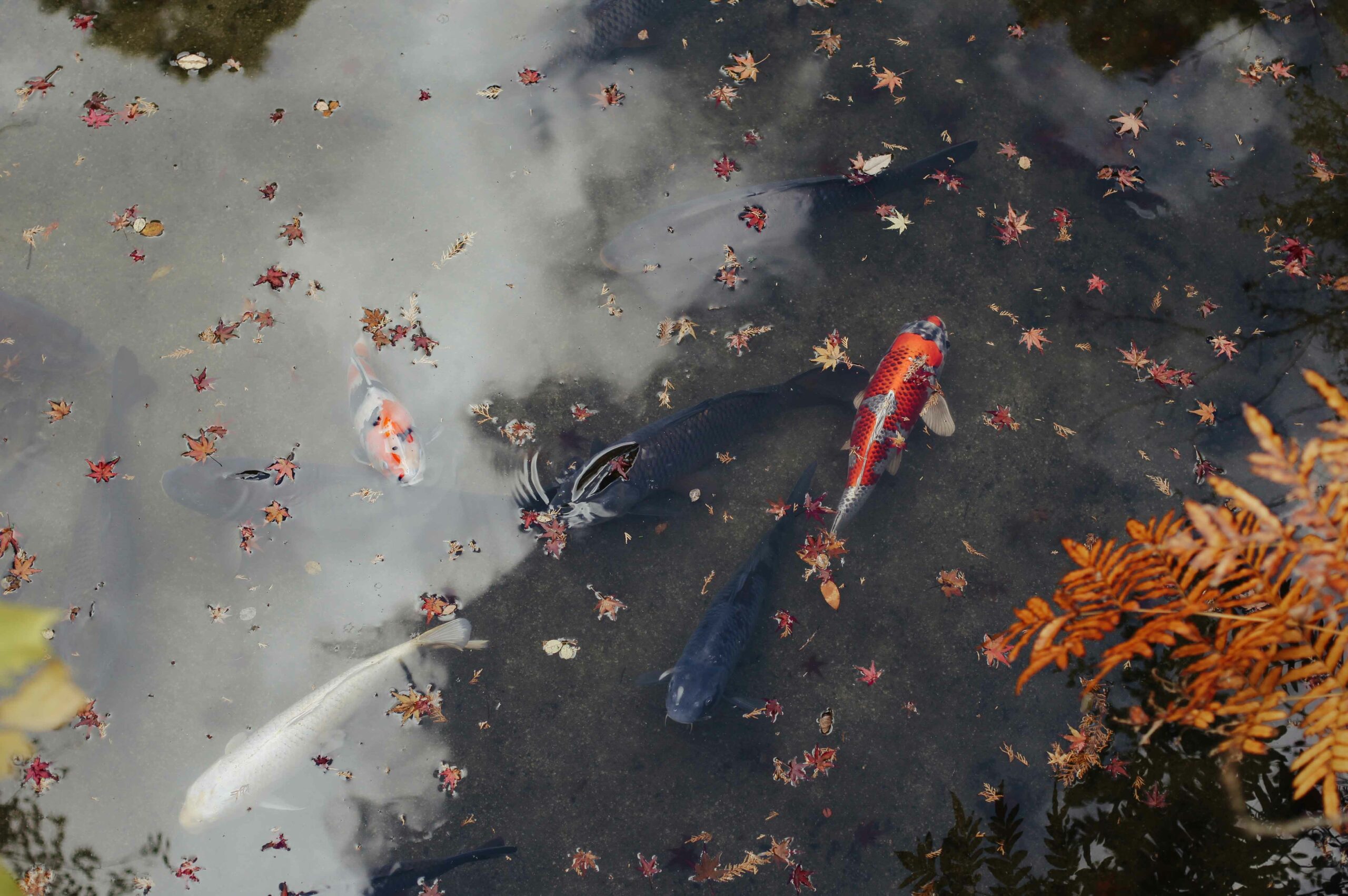
Access: From Demachiyanagi train station, ride the Eizan line for four stops (taking seven minutes) to Shūgakuin station. Program Manshuin’s address into your mapping app, or follow one of the routes listed here on foot, taking around 20-25 minutes. Alternatively, the number 5 bus from Kyoto station will take you to Ichijoji Shimizucho bus stop in 50 minutes, with walking directions to Manshuin listed here.
Name: Manshuin Monzeki
Address: Manshuin Monzeki, 42 Ichijoji Takenouchicho, Sakyo Ward, Kyoto, 606-8134, Japan
Open: 9:00am – 5:00pm (last entry 4:30pm), 7 days a week
Admission: ¥600
Website: https://www.manshuinmonzeki.jp/
Post by Japan Journeys.



